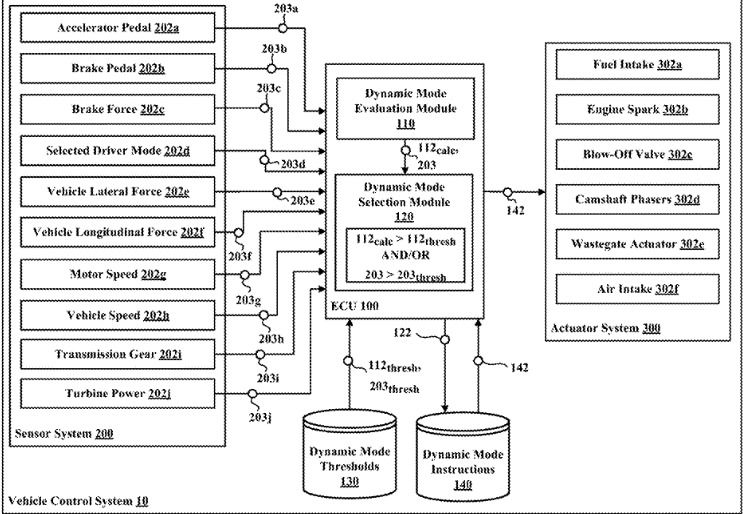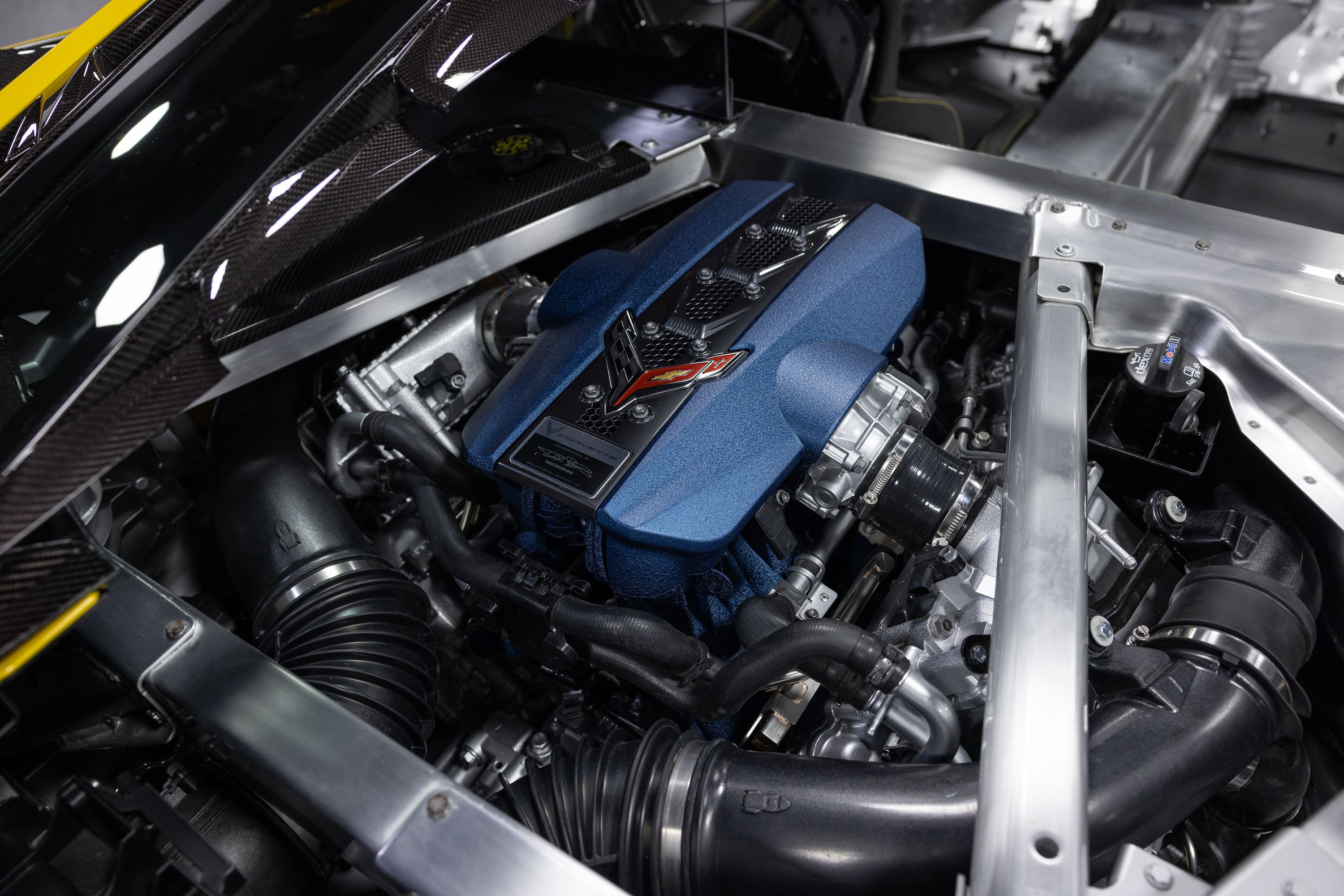Hitting the sweet spot between turbo lag and power output is a balancing act for automotive engineers and aftermarket tuners who strive to minimize the former while maximizing the latter. It’s been this way for decades, and now, it seems General Motors (GM) is moving toward a radical torque management approach with the potential to upend traditional tuning methods.
A recently published GM patent (2025/0052207) with the United States Patent and Trademark Office (USPTO) reveals a design that leverages predictive algorithms and real-time combustion analytics to not only reduce turbo lag but actually anticipate it.
The design’s dynamic nature allows it to predict and adjust torque delivery before the driver even demands full power. This places GM at the forefront of turbocharged engine performance, which can read driver intent and adjust torque delivery.
Though filed in August 2023, the timing of the patent’s publication is no accident. It signals a calculated shot at OEMs and even aftermarket companies behind AI-powered engine tuning systems, such as MetaECU and Hondata’s FlashPro, designed for late-model Honda and Acura vehicles.
The primary difference between these aftermarket solutions and GM’s system is that the latter fundamentally rethinks torque calculation and distribution, and then adds prediction.
See also:
How GM’s System Works: Preemptive Torque Control

Today’s turbocharged engines generally feature reactive torque management systems that wait for throttle input and measure airflow before adjusting boost and timing. GM’s newly patented torque management design seeks to flip this traditional method.
Instead of relying on the driver’s actions, it analyzes real-time data points, including pedal position rate-of-change (that is, the force of throttle stabs), combustion chamber pressure sensors (to detect pre-ignition tendencies), and gearbox load pre-emption (to predict shift points).
With the system effectively simulating the engine’s response curve before the turbo spools, it not only minimizes lag but also eliminates the perception of lag. The design envisions a turbocharging system even capable of preemptive low-end torque generation (artificially inflating low-end torque).
By briefly altering cam timing or injecting a micro-burst of extra fuel, the system can create a feeling of instantaneous response while the turbo catches up.
ECU Remapping vs. GM: Two Philosophies Of AI Tuning

MetaECU (chip tuning and ECU remapping), for example, takes a different approach to torque management. Where GM’s patented design predicts torque demand, MetaECU uses machine learning to continuously rewrite the engine’s tuning maps, relying on parameters like driving style, fuel quality, and even weather.
GM’s system takes this several notches further by calculating moves three steps ahead – like a chess player. MetaECU, while its system adapts over time, still runs on the traditional ECU framework that optimizes existing parameters.
GM’s hardware-level redesign, on the other hand, boasts dedicated sensors and actuators primed specifically to preempt torque control. The implication is that aftermarket tuners will have a harder time hacking the system, obviously a calculated move as the automaker cracks down on unauthorized ECU tuning.
GM’s encrypted ECU systems across its latest models, such as the Corvette E-Ray, make it nearly impossible for aftermarket tuners to modify the vehicles’ PCM (Powertrain Control Module). In some cases, authorized GM dealerships decline to service vehicles with modified ECU software.
While this crackdown helps protect the vehicle’s warranty and ensures compliance with emissions regulations, modders and Corvette enthusiasts are actively seeking bypass methods around the restrictions.
See also:
The Aftermarket Tuning Dilemma

Companies like Cobb Tuning, well-known for its ECU tuning solutions, dominate the turbo performance market by rewriting factory torque maps. Similarly, institutions like EFI University offer training and educational resources on engine tuning, which still relies on reacting to throttle input.
GM’s patented system disrupts this traditional tuning method with its predictive torque algorithms that adjust faster than a tuner can log data.
If, for instance, the system detects aggressive throttle stabs, it could open the wastegate early, ultimately pre-spooling the turbo and inadvertently nullifying the tuner’s boost targets. Consequently, aftermarket tuners will be forced to either reverse-engineer GM’s algorithms or build their own predictive models.
The Bigger Picture: Torque Wars 2.0
While GM’s patent is primarily about performance, it is also about control.

2025 Corvette ZR1.
Embedding torque management at the hardware level allows the automaker to effectively lock out tuners and–predictably–license the technology to competitors (such as Toyota and its T24A-FTS 2.4-liter Dynamic Force turbo system) still searching for the ultimate weapon against turbo lag.
It also supports GM’s AI-integration future-proofing efforts, as the marque could have imagined the system paired with Ultifi’s cloud updates. Time will tell how amenable drivers will be with “perfect torque,” as half the joy of turbocharged engines is the surge of boost, which GM’s system risks turning into a simulation.
While there aren’t official confirmations for when the system will hit the production line, the signposts point to the Corvette ZR1’s twin-turbo LT7 V8 or the Cadillac Blackwing lineup as the ultimate destination.